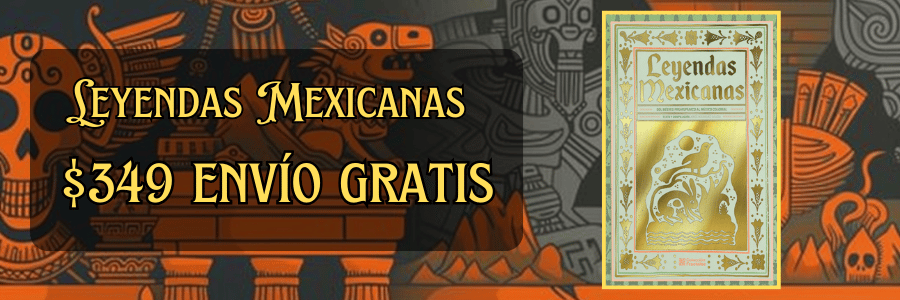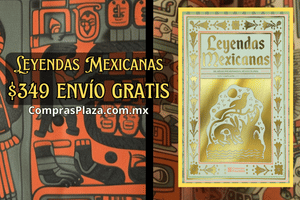The Day of the Dead: From Aztec Traditions to Modern Celebrations
The Day of the Dead, or Día de los Muertos in Spanish, has evolved into one of the most revered traditions in Mexico and among Latin American cultures. This colorful celebration, which occurs on November 1st and 2nd, honors deceased loved ones and upholds the belief that the spirits of the departed return to the earth to be reunited with their families. The Day of the Dead's significance extends beyond mere remembrance; it reflects a rich tapestry of pre-Columbian traditions, Catholic influences, and contemporary cultural expressions, forming a vital part of the Mexican identity.
To fully appreciate the Day of the Dead, one must travel back to the pre-Hispanic period of Mesoamerica, particularly to the Aztec civilization. Within the Aztec culture, death was not viewed as an end but rather as a continuation of life in different forms. The Aztecs believed in a cyclical understanding of existence, where life, death, and rebirth were intrinsically connected. They honored their dead with rituals and ceremonies, often believing that the deceased would accompany the living during certain periods of the year. Among these ceremonies was the dedication of the month of Mictecacihuatl, named after the Aztec goddess of death, which took place in August and involved offerings of food, incense, and flowers to appease the spirits.
The arrival of the Spaniards in the early 16th century brought profound changes to the indigenous beliefs and practices indigenous to the region. The Spanish colonization resulted in the introduction of Catholicism to Mexico, which gradually transformed local customs. The notion of remembering the dead began to intertwine with Christian holidays, most notably All Saints' Day and All Souls' Day, celebrated on November 1 and 2 respectively. The convergence of these religious practices and Indigenous traditions created a unique syncretic celebration that laid the groundwork for the Day of the Dead as it is known today.
The modern incarnation of the Day of the Dead weaves together the vibrant imagery of the Aztec culture and the observant nuance of Catholic rites. The central aspect of the celebration is the creation of altares, or altars, that families construct to honor their deceased loved ones. These altars are adorned with photographs, mementos, and beloved items belonging to the departed, providing a personal touch that conveys a sense of love and connection. Food, such as pan de muerto, a special type of bread shaped like a skull, and traditional meals that the deceased enjoyed, are placed to nourish their spirits for the journey back.
Marigolds, known as cempasúchil in Mexico, are emblematic of the Day of the Dead. The vibrant orange and yellow hues of these flowers are believed to attract the spirits of the dead, guiding them back to their altars. The coiling paths of marigold petals are seen as bridges connecting the living and the dead. Additionally, other elements such as sugar skulls, papel picado (colorful tissue paper cutouts), and candles serve as essential features of the celebration, each symbolizing different meanings and intentions.
In many regions of Mexico, the celebration of the Day of the Dead extends beyond private family gatherings. Public festivals, particularly in cities like Oaxaca and Pátzcuaro, transform neighborhoods into a vibrant kaleidoscope of color and life. Parades, music, and artistic displays invite the community to participate in the festivities, creating a communal atmosphere that intertwines joy and grief. The juxtaposition of these emotions speaks to the public acknowledgment of death as an integral part of life, encouraging individuals to express their feelings through joyful gatherings rather than somber mourning.
In contemporary times, the Day of the Dead has transcended borders and cultural boundaries, making its mark internationally. The traditions that once blossomed exclusively within Mexico's borders have begun to resonate with communities worldwide. In the United States, for example, cities with significant Mexican populations, such as Los Angeles and San Antonio, have adopted the celebration, creating public events featuring altars, art exhibits, and workshops. These celebrations embrace a shared cultural experience while allowing individuals from diverse backgrounds to honor their own ancestors and the concept of death.
UNESCO recognized the significance of the Day of the Dead in 2008, designating it as an Intangible Cultural Heritage of Humanity. This acknowledgment underscores the importance of the celebration in preserving traditional practices and fostering intercultural communication. The designation not only validates the richness of the Day of the Dead as an essential element of Mexican heritage but also challenges the world to explore themes of remembrance, loss, and existence in their own cultures.
The Day of the Dead's representation in popular culture has also flourished, most notably showcased in film, literature, and art. One of the most prominent examples is the animated film "Coco," released by Pixar in 2017. The film brought global attention to the Day of the Dead through an engaging story that highlighted family connections, musical heritage, and the celebration itself. "Coco" illustrated the deep-rooted love and respect for ancestry that the Day of the Dead inspires, while also emphasizing that the celebration is not solely a tribute to the dead, but a rich embrace of life and memory.
However, the commercialization of the Day of the Dead has raised questions and discussions regarding the authenticity of the traditions and the potential for cultural appropriation. As the celebration gains visibility, there are concerns that aspects such as the sugar skulls and marigold decorations are being commodified, losing their profound symbolism and cultural significance. The challenge lies in finding a balance that honors the heritage of the Day of the Dead while allowing respectful participation and representation from those outside of Mexican culture.
Throughout its evolution, the Day of the Dead has continued to adapt to societal changes across generations, reflecting the dynamic nature of cultural practices. The fusion of old and new has enabled families to establish personal rituals that hold deep emotional resonance. For many, the act of creating altars, feeding the dead, and sharing stories during the celebration serves as a way to maintain bonds with ancestors while fostering a sense of identity and continuity within their families.
As the Day of the Dead continues to be celebrated, its essence remains in honoring the duality of life and death. With its roots firmly planted in Aztec traditions and nurtured by centuries of cultural adaptation, the celebration embodies a powerful message about the human connection to memory, love, and the cycles of existence. In a world marked by rapid changes, the Day of the Dead serves as a poignant reminder that death is not an end but rather a bridge that connects the living and the departed—a day of joy, remembrance, and ultimately, a celebration of life.
Thus, the Day of the Dead transcends its origins, weaving a narrative that connects generations, unites communities, and fosters understanding across cultures. Whether expressed through family altars, vibrant parades, or public art, the celebration stands as a testament to the resilience of human tradition in the face of change and loss. In embracing the customs of Día de los Muertos, it becomes evident that the celebration is continuous and evolves, ensuring a collective remembrance that is not confined to the past but enriches the lives of the living today.
Explore More:
| How the Mexican Revolution Changed the Role of the Catholic Church |
| Education and Schools in Colonial Mexico |
| Women’s Rights in Mexico: Progress and Struggles After the Revolution |
| How the French Invasion of Mexico Impacted the Mexican Monarchy |
| The Artistic Legacy of Mexico’s Colonial Period: From Paintings to Sculpture |
| The Role of Oil in the Development of Alternative Fuels |
| How Mexican Artists Are Reimagining Their Cultural Roots |
| The Artistic Expression of Mexico’s Indigenous Communities |
| The Role of the Chichimeca in the Silver Mining Boom of Zacatecas |
| The Diplomacy of the French Intervention: Letters and Treaties |



